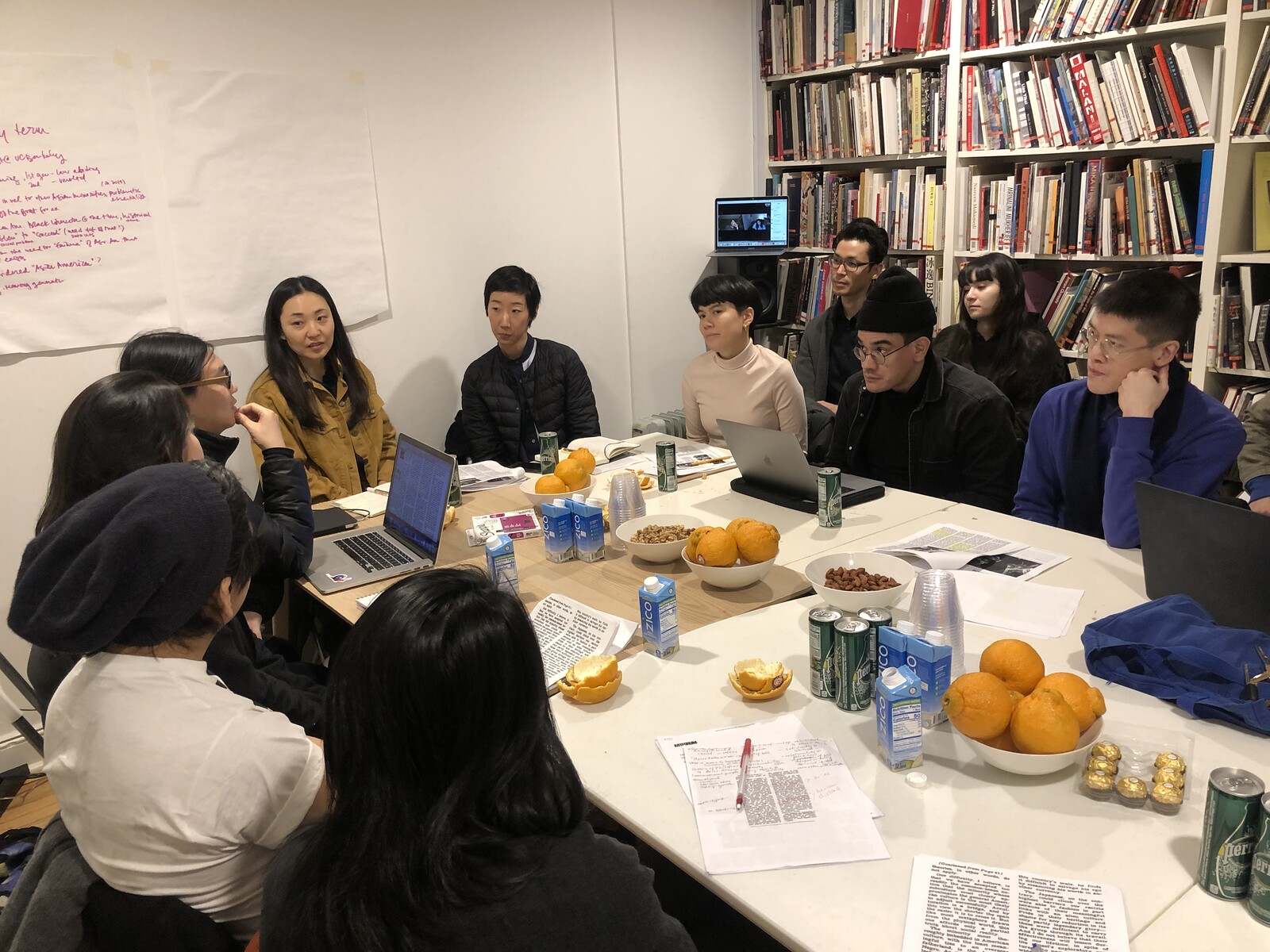“For the Founding of an Institution”: Asia Art Archive in America Leadership Camp III: “Model Minority and Model Majorities”
by Owen Duffy
The fourth and final quarterly meeting of “Model Minority and Model Majorities,” the third Leadership Camp organized by Asia Art Archive in America, took an unexpected turn. In the preceding months, we “campers,” a cohort of seventeen artists, curators, writers, designers, and other cultural workers, met for self-guided sessions to discuss and debate the complexities of being Asian in America, the racist history of the term “model minority,” allyship, and nonwhite, non-patriarchal modes of leadership. Halfway through our June 2020 meeting, focused on interethnic community organizing and the history of race relations between Asian and Black communities, the group revisited an earlier proposition: a collectively created asset map. Several campers voiced that discussions of class had been consistently avoided, and after some hesitation, we took the plunge. Artist Maia Chao created a brief Google Form that would populate a spreadsheet of our class secrets (to be deleted soon thereafter), a rarity in an art world in which many perform poverty and gloss over elephantine disparities of wealth. What were our annual incomes? Who among us had inherited wealth? Who was fortunate enough to own their own home in New York’s parasitic rental market? Who enjoyed proximity to the rich? I’ll return to the asset mapping below, but in the spirit of Leadership Camp, let’s be transparent: I am a white, cisgendered male who earns 63,000 dollars per year before taxes, 67,500 dollars if you factor in my adjunct pay. I rent my apartment. My father did not graduate college and has sold cars for almost forty years, but I do have an uncle who married into a wealthy Baltimore family. I possess no inherited wealth, but in case of catastrophe, I do have a safety net.
A year earlier, for Leadership Camp’s first session, my fellow campers and I packed into the basement of Asia Art Archive in America (AAA in A), the small but mighty New York outpost of the Hong Kong nonprofit dedicated to the documentation of recent art in Asia. After introductions, it became apparent that I’d be the sole non-Asian participant, the cohort’s minority. Artists Christopher K. Ho and Furen Dai, organizers of “Model Minority and Model Majorities,” then presented us with a series of challenging questions: Is it possible to leverage the “model” function of “model minority” to design new forms of leadership both inside and outside the art world, as opposed to merely affirming obsolete myths of assimilation? How and where do Asians fit into contemporary discourse about being a person of color? How does one build meaningful intercommunity and interethnic coalitions? This was the first day in a decidedly transformational experience—a collective attempt to “model” a form of leadership outside of wealthy white patriarchy—in a year marked by profound social and political struggle: seismic protests in Hong Kong, unending tensions between China and the United States, the ugly insurgence of racism against Asians in the United States, the ongoing Black Lives Matter protests, the toppling of Confederate monuments, renewed anti-racist movements, and a world-pausing pandemic. Dispensing with the notion that art is some great agent of liberation, the camp understood art as a fellow traveler with these conflicts, one that adapts to, brushes up against, informs, and is informed by them.
Read the full text on School Watch.
School Watch presents critical perspectives on art education. Featured profiles and conversations survey programs in fine art, curating, critical theory, and other related disciplines, as well as the ideas and conditions that influence their practice.








